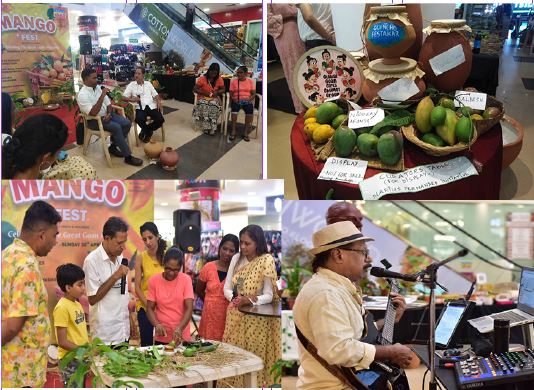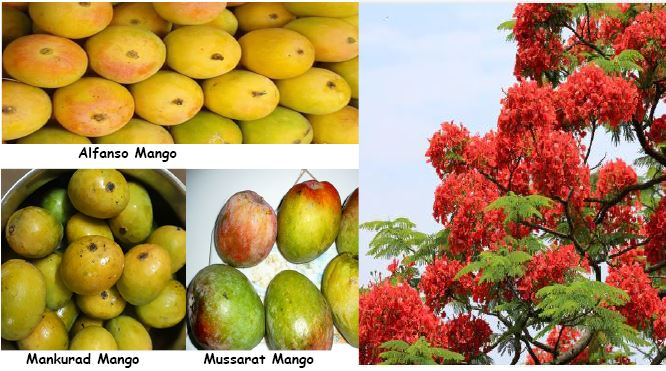WHAT is happening to the old joys of eating mangoes in Goa? I just made the mistake of buying a gorgeous looking badami mango purchased from my favourite supermarket and had it for my favourite meal of the day…breakfast! It was my first or really second mango of the mango season setting in currently in Goa and no, the badami is not a Goan mango – this one had such a flat, watery, frustrating taste! This badami from wherever it came offered neither aroma (which is the soul of any fruit of flower), nor taste, nor the satisfaction that I had eaten a real for goodness sake Indian mango!
Of course we think mangoes are Indian and didn’t come from anywhere else (never mind that Thailand mangoes too win fame and fortune, in Malaysia they call mangoes “buah manga”). Actually, the truth is the fruit of the mango tree is indigenous to southern Asia and especially Myanmar and Assam…it has becomes the largest cultivated fruit tree of the tropics and there are any number of cultivars …yes, the mango is related to the cashew as from same family as Anacardiaceae.
IT is not for nothing that the mango has become the national fruit of India, also Pakistan, Philippines, Bangladesh. It is a very ancient fruit, it’s mentioned even in our Ramayana and Mahabharata epics and most auspicious Hindu festivals will have festooned mango leaves everywhere. The mango is one of the fruits said to have gone from south Asia to the West…including Brazil some 1700 years ago, West Indies around 1740. A much travelled fruit is the fruit of the mango tree. But generally speaking there are two genetic varieties in modern mangoes – we have the Indian types and we have the South East Asian types.
Mango scientists will say the mango is a fleshy stone drupe fruit in many shapes – round, oval, heart shaped, kidney-shaped, etc. Mangoes are rich in vitamins A, C and D and of course like all fresh fruit rich in enzymes (which so many of us don’t include in our daily eating habits)…
CUT to the present in Panaji, Goa when last week I was looking at the mangoes on display at the Goencho Festakar Marius
Fernandes, Prakash Kamat & company organised zero waste inclusive mango fest at the Caculo Mall over the weekend of April 29/30, 2023. Must say all the mango revelry of music, mango talk and exchanges with the very knowledgeable Director of Agriculture Nevil Afonso – amongst the highlights were decorations by artist Angela Ferrao, a mango grafting demo by Shruti Dhupkar, cake cutting for memorable Goan artist Vamona Navelkar – and much more. A very infectious mango festival this and an absolutely eco-friendly one. Mango saplings were selling for Rs100 courtesy the agriculture department…prices are up.
There was this cute display of what Marius told me were endangered mango species which nobody is interested in growing anymore, this included nicolav afonso, maldesh and even the mancurad and totapuri, are the latter two also endangered? No, not the totapuri and more farmers are growing mancurad mango trees now in whatever space they have. Goa’s aristocratic mancurad are still selling from Rs800 to Rs1,000 and I said no, thank-you. Mancurad or malcurada is too cloyingly sweet and fibrous to be a table cut fruit.
There’s Goan hapus or alphonso and there’s a lot of this stock in the market currently but very little hapus from Ratnagiri belt this year…from where the Devgad hapus is prized. But go Panaji market and it is alive with mangoes of many varieties, to my disappointment even the humble pairi which I buy every year for ras-making is being quoted at Rs800 dozen! The prices will fall later of course as the monsoon rains approach. Funny, I am looking for good stock mangoes in Goa and can’t find them.
I mean if the May or gulmohr trees are blooming all over Goa in their glorious bridal colours of red, scarlet and even rich peach…when it’s steaming hot beneath a blue sky – it’s traditionally time to relish mango delights like mango squash, mango milk shake, mango ice-cream, mango puree, cut mango laced with fresh cream, only mango.
Goa has some of the most fascinating mango lore over the ages and the Portuguese were of course smitten by the fruit and called it “manga” from the south Indian Malayalam – for once the mango went from the old world to the new world of the Americas. At mango festivals you will get to see malcurada, xavier, bishop, hilario…get the PA Matthew’s “Mangoes of GoanOrigin” if you want to get familiar with mangoes of Goan origin.
I WAS looking at these large mangoes called bishop at the last mango festival but when the lady here said Rs150 each I reluctantly said, no thank-you, I have no business eating mangoes this expensive, I will feel like a worm if I do so! I am happier eating my more economical kesar and the Rs300-400 dozen mangoes of a smaller not so branded vintage mangoes…little wild “ghota” mangoes for lesser rates. The ghota make for grand mango dal and of course mango sasav. But I must confess I like hapus creaminess for a mango dahi-bhat for summer’s hot afternoons.

Other mango names to take an interest in, non-Goan manoes: Totapuri (poly mango) Ratnagiri alphonso, amrapalli, vanraj, kesar, chaussa, pairi, ratna, hybrid-87, langda, neelam, maya (an Israel mango) and many more. Funny or not funny, during mango season I find if I go cruising on my two-wheeler at dawn through all these little Panaji lanes where the upper crust resident have mango trees overlooking in their gardens overlooking the street …sometimes a mango or two will fall and I quickly go pick them up and surreptitiously put them away in my bag! Sometimes some kids raiding a mango tree will look at me and give me a mango or two not to create a racket.
Well, I’ve eaten enough mango ripe in my lifetime – mango jam called mangada is to live and die for but then so is fig jam (figada) and pineapple jam (pinada?)…nowadays at festivals one may find excellent mango “papad” and you may invest in them. Little tid bits of this dehydrated mango slabs can cheer up a salad, coleslaw or curry with just that je nais sais qua wee honest sweetness. Drop in at the bakeries and there’ll be plenty of mango pastries but I’m not sure you will like the miserliness of thinly layered hapus mango pastries or sandwiches! Mango cake, of course, check it out at Gauri Karkal’s Pastry Cottage.
Enjoy the gulmohr trees blooming over and enjoy a mango or two this mango season of May, my friends and let me know if you come across any great finds!
